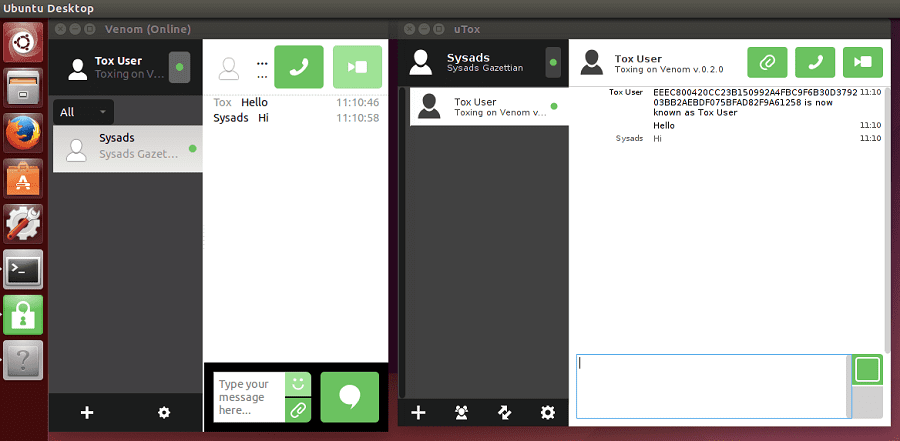

Qt and respective logos are trademarks of The Qt Company Ltd.
QTOX ANDROID APP SOFTWARE
The documentation provided herein is licensed under the terms of the GNU Free Documentation License version 1.3 as published by the Free Software Foundation.
QTOX ANDROID APP HOW TO
The following topics provide more details about how to use Qt for Android:

QTOX ANDROID APP CODE
Integrate Java code into your application using Qt Android Extras.Connect and exchange data with Bluetooth and NFC-enabled devices.Retrieve positioning data using satellite or network information.Handle Multimedia content in your Qt Quick 2 applications.Support for the Material Style with Qt Quick Controls.Run Widget-based and QML applications on a device or an emulator.The following list summarizes what you can do with Qt for Android: All other trademarks are property of their respective owners.Android 5.0 or later (that is, API Level 21 and up) qTox supports multiple profiles, importing / exporting profiles, and encrypting profiles and save files with a password. Qt and respective logos are trademarks of The Qt Company Ltd. qTox has support for avatars, changing nospam, setting custom aliases for contacts, and contact blocking. The following topics provide more details about Qt for iOS:ĭocumentation contributions included herein are the copyrights of Note that some examples may have limited functionality.įor a list of examples known to work on iOS devices, visit Qt for iOS Examples.

Use the ios keyword to search for examples in the Qt Creator Welcome mode. In Qt Creator, tested examples on iOS can be looked up. Most useful is perhaps the possibility for adding In-App Purchasing with the StoreKit framework. This makes it possible to use frameworks from Apple's Developer Library in Qt applications. mm, and add them to OBJECTIVE_SOURCES instead of SOURCES in the. To enable this mode, suffix your source files with. Using Objective-C Code in Qt ApplicationsĬlang, the compiler used for applications on Apple Platforms, allows mixing C++ and Objective-C code. You can find information on how to set up and run Apple mobile device applications in Qt Creator's manual:Īs mentioned previously, you must have Xcode installed. Note that you must re-import the project if its setup changes, for example, when adding or removing source files. run qmake (if you have not done so previously).Here is how to build a project with Xcode:
QTOX ANDROID APP PRO
pro file project and exporting it to Xcode. Building Applications From the Command LineĪs mentioned previously, the development workflow consists of maintaining a normal.

The easiest solution is to use a profile that takes any App ID (a *).īefore building any Qt applications, you should test that Xcode is set up correctly, for example, by running one of the standard Xcode application templates on your device. However, for running applications on a mobile device and/or publishing your applications in the App Store, you must join the Apple Developer Program, and set up developer certificates and provisioning profiles. In practice this means you also need the latest version of macOS to develop apps with Qt, due to Xcode's system requirements.įor running Qt applications on your Mac or in the simulator that comes with Xcode, this is all you need. Note: As recommended by Apple, you should always use the latest Xcode version when building your applications for the App Store.


 0 kommentar(er)
0 kommentar(er)
